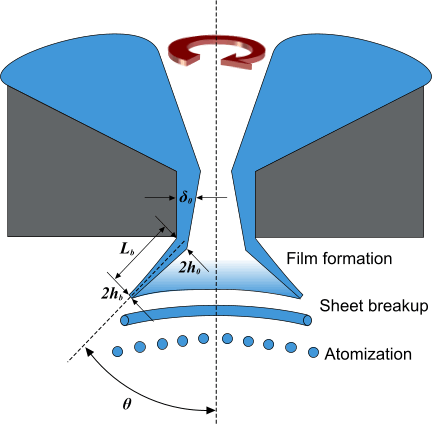Working with Primary Atomization
Primary atomization refers to the process of forcing liquid through a small orifice at a high pressure, resulting in a fine spray of liquid droplets.
Depending on the internal construction of the injector, the liquid at the exit of an injector nozzle can be in the form of a thin liquid sheet or a jet. Simcenter STAR-CCM+ currently provides two models that simulate the atomization process of the liquid exiting the nozzle: the LISA model for the breakup of a thin liquid sheet that is produced with a pressure-swirl atomizer, and the Huh model for the breakup of a liquid jet created through a simple hole-type nozzle. Both types of injectors are grouped under the heading of "Nozzle Injector" that is defined by two basic parameter: orifice dimeter at nozzle exit and injector axis. Additional model-specific parameters are added according to the selected model.
What Is the Pressure-Swirl Atomizer?
The pressure-swirl atomizer, also commonly known as a simplex atomizer, is widely used for liquid-fuel injection in gas turbines, oil furnaces, and direct-injection spark-ignited automobile engines.
In this atomizer type, a swirling motion is imparted to the injected liquid through nozzles that are known as swirl ports. The liquid accelerates as it flows through the swirl ports into a central swirl chamber. Under the action of centrifugal force, it spreads out in the form of a conical sheet and develops a hollow air core. It emerges from the orifice as an unstable thinning liquid sheet, then breaking up into ligaments and then droplets. A sketch of a hollow-cone pressure swirl injector is shown in the figure below.

In the illustration above, three stages in the atomization process are identified: film formation, sheet breakup, and atomization. is the initial film thickness in the nozzle; is the initial thickness of the film as it exits the nozzle, and is the thickness of the film at the point of breakup. is the spray angle, which is defined as .